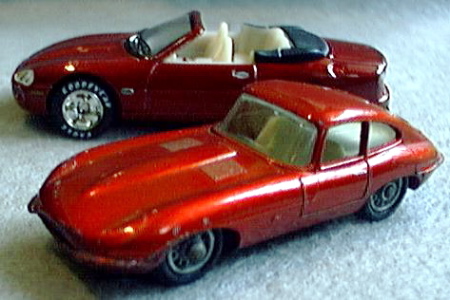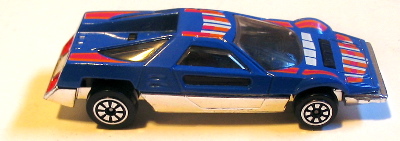Sometimes it is easy to let the
'Baby Boom' generation control our world. I was born right in the
middle of that population bulge and it has influenced my life more
than any other demographic trend. Many of you reading this right now
were also born between 1949 and 1964. While those born during these
15 years have forced many changes on our world, our primary topic
here is limited to toy cars. It should be no surprise that this same
generation is the driving force in the collection of toy cars. I think
it's time for that to change.
The toy car era from the mid-1950's to the mid-1970's has been the primary
focus of collectors. Red-line Hot Wheels and regular-wheel Matchbox have
long been the yard-stick by which all other toy cars are measured. As wonderful
as these toy cars are, few under the age of 35, have any childhood memories
of these collector icons. While the discretionary income of the baby-boomers
continues to drive the toy car collecting market, this may limit the future
of our hobby.
At toy shows I see far fewer 20 or 30 year old collectors and far more who
look like me. Is the toy car hobby following the toy train hobby into the
twilight years? Sure, kids still play with toy cars but for the past 30
years, Red-lines and regular-wheels have not been children's toys. Think
about the generation of toy cars before your childhood. How much do they
interest you? Matchbox models of the 1950's will never be my passion. I
never had them as a child so they do not generate the memories that are
so much a part of collecting. Early Tootsietoy and Dinky models are even
more removed from my formative years. Of course I admire these models and
may add a few to my collection but they will never be as prized as the toy
cars I first had as a child.
It's easy to identify your era. Just think back to the first toy car you
can remember. For me it was the Matchbox Jaguar 'E' type with candy-apple
red paint and sexy wire wheels. Any toy cars before that time will never
create the same emotion for me.
If we want to create the same emotion in new generations of collectors,
it is critical that the toy car story beyond the mid-1970's be told. Some
readers questioned the inclusion of a feature story on Kenner's Fast 111's
in TofTC. These models of the early 1980's are seldom collected by baby-boomers.
What was your reaction to this story? Did you move on quickly, wondering
why would anyone want these toy cars with weird rear-bumpers?
Many stories of toy cars from the past 30 years have been included
in TofTC and that will not only continue but increase. While we will
also continue to feature stories on classic models cherished by the
boomers, let's face it, many of these stories have already been told,
perhaps ad nauseum. This issue's feature is about another post-1980
story, the General Lee Dodge Chargers.
Many stories from the last 30 years deserve our attention. Manufacturers
like Real Toy, Revell and Road Champs have made very important contributions
to our hobby but with little recognition. Topics like the turbo cars of
the 1980's, the Japanese imports of the 1990's or even (gulp) the SUV in
small-scale, should get equal time with classic European exotics or American
muscle cars. Toy car manufacturers have given boomer collectors a steady
stream of '57 Chevy, '70 Mustang and VW Beetle/Bus models and we still want
more. Do we need dozens of different versions of these same cars while many
of the models that inspired the children of the 1980's and 1990's are neglected?
The only way to bring more under-40 collectors into the hobby is to give
them what they want. TofTC will continue to do that. |

Which Matchbox Jaguar model did you play with as a child, the XKE of the
1960's or the XK8 of the 1990's?

Is Kenner's 'Stock Shocker' Fast 111 model a toy car you would want? It
seems few Baby Boomer collectors do. Of course the resulting low value means
I could find it for just $2 at a toy show. |




